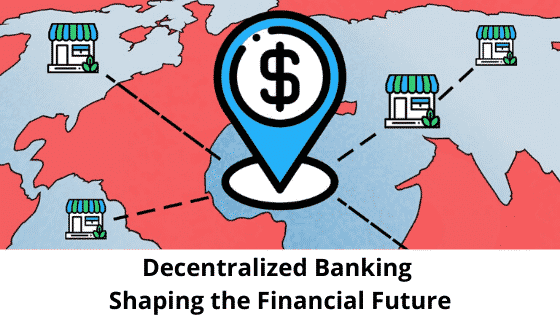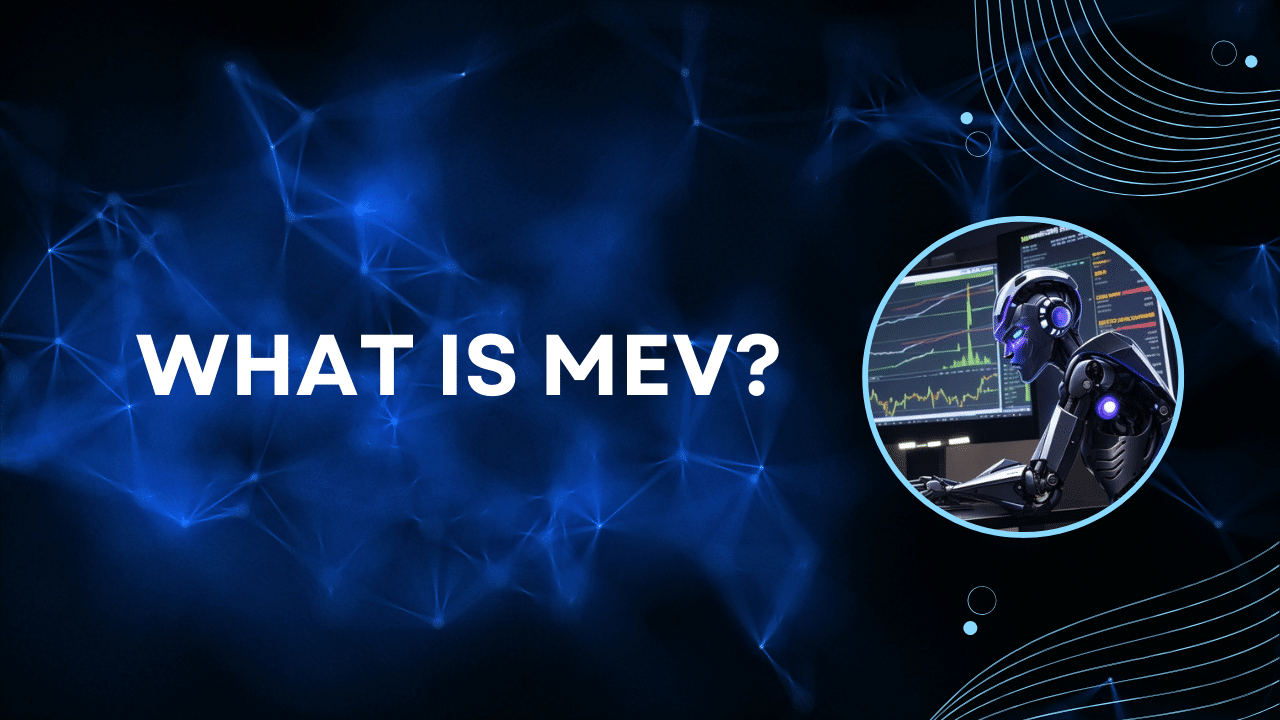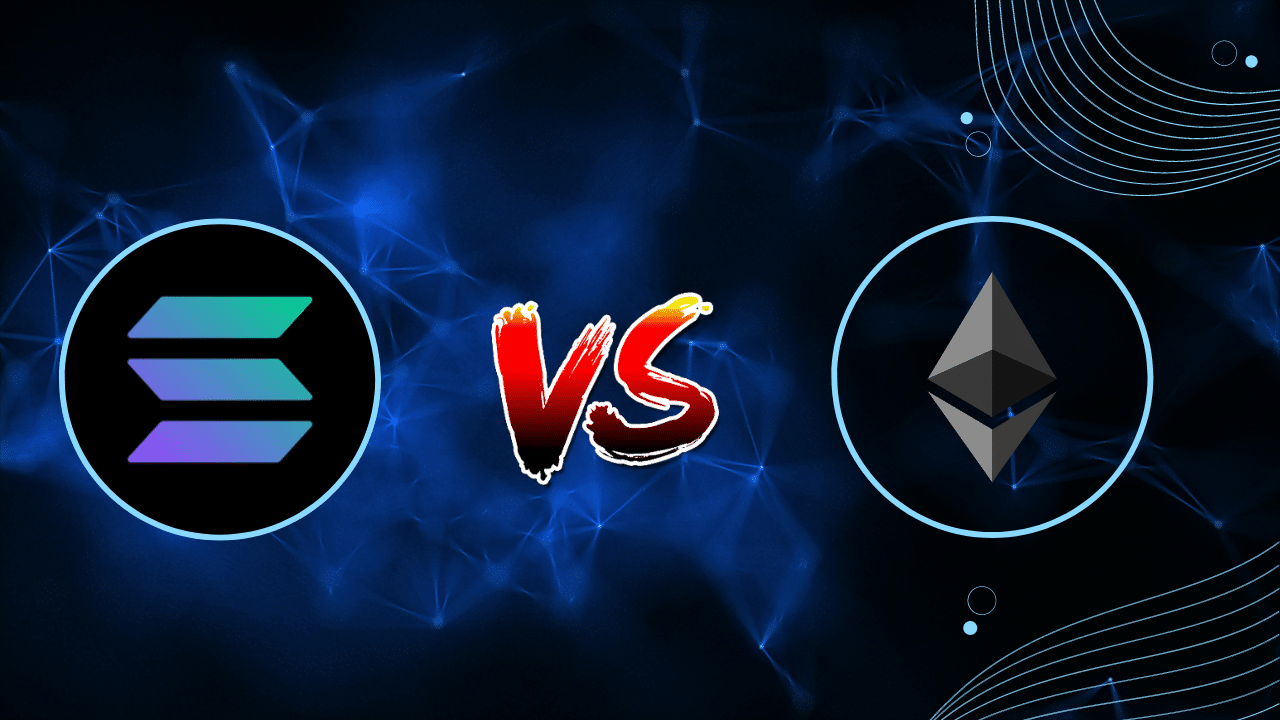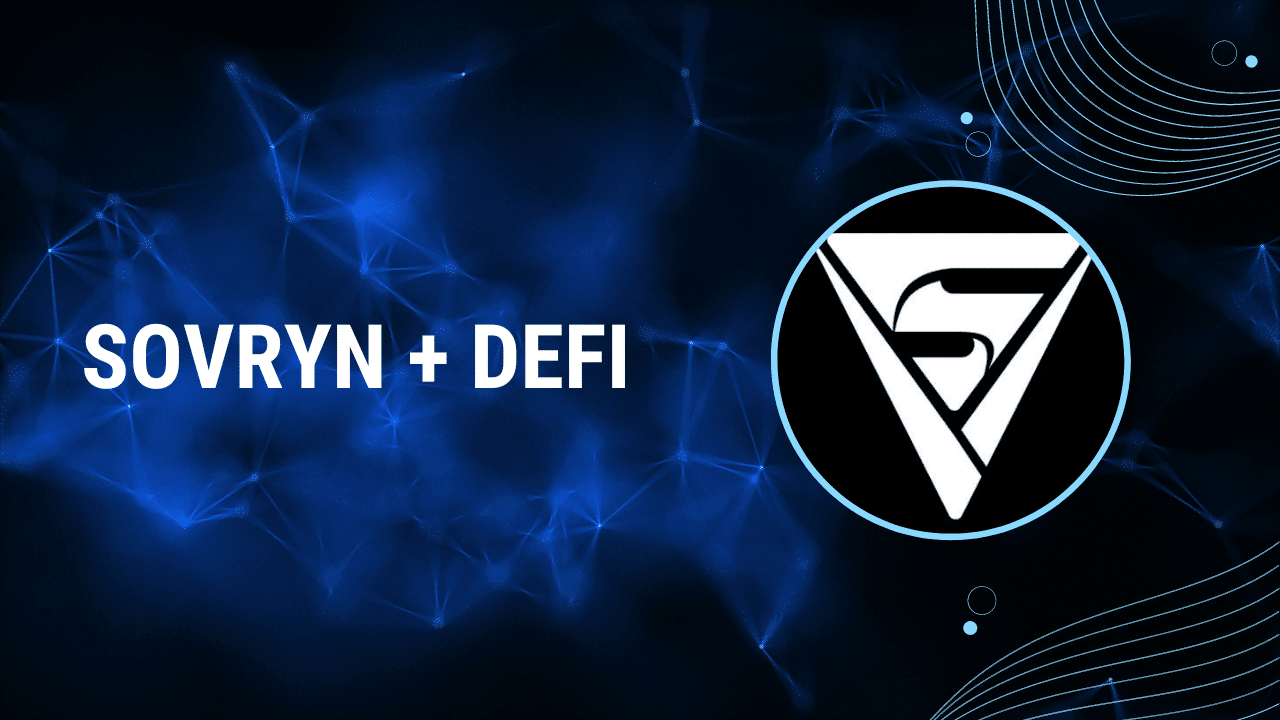Contents
|
|
2019 was the year of Decentralized Finance, aka DeFi. Simply put DeFi is the collective name given to an ecosystem of financial applications built on top of the blockchain also known as Decentralized Banking. The main aim of DeFi is to create a financial service ecosystem that’s open-source, permissionless, transparent and without any central authority. Within this ecosystem, the users have full control over their assets and they can interact with the ecosystem through decentralized applications (dApps).
What’s the difference between DeFi and traditional financial institutions?
- Traditional financial institutions are managed by a centralized governing body. However, DeFi applications run on smart contracts, which ensures that these dApps run without any human intervention.
- Since the application has been built on a public blockchain, its code is transparent and open for everyone to see. This is in stark contrast to traditional financial institutions, which are notoriously opaque. In a DeFi ecosystem, everyone can contribute to making the applications seamless and bug-free.
- A public blockchain is “permissionless” in nature. This means that the ecosystem has no gatekeepers keeping track of who gets to create dApps and who doesn’t. Anyone and everyone can create and use DeFi dApps.
- Individual DeFi elements can be combined to create a whole new product. Eg. One can combine decentralized exchanges and stablecoins.
What role do smart contracts have in DeFi?
Smart contracts are at the heart and soul of DeFi. A contract is a legally binding document between two parties, which is overseen by a third-party, usually a lawyer. A smart contract works similarly, except for two game-changing modifications – it is self-executing and doesn’t need a third-party for overseeing.
To give you a proper definition – A smart contract is a computer protocol intended to digitally facilitate, verify, or enforce the negotiation or performance of a contract. It allows two parties to interact directly with each other without going through a third-party/intermediary.
This innovation was introduced by Ethereum, who leveraged them to become the first-ever dApp development platform. This is also the reason why a majority of the DeFi applications have been built on Ethereum. However, thanks to the RSK sidechain, some interesting DeFi applications are being built on Bitcoin’s blockchain as well.
Contents
Decentralized Banking Use Cases
In this section, we are going to look into some of the popular DeFi use cases, namely:
- Borrowing and Lending.
- Monetary banking services.
- Decentralized marketplaces.
#1 Borrowing & Lending
Open and decentralized borrowing and lending are the most popular applications in the DeFi ecosystem. The lack of intermediaries reduces counterparty risk, making borrowing and lending cheaper, faster, and more available. Decentralized borrowing and lending have the following advantages over the traditional credit system:
- Instant transaction settlement.
- Ability to collateralize digital assets.
- No credit checks.
- Potential standardization in the future.
#2 Monetary banking services
Monetary banking services are a natural use case of DeFi applications. Issuance of stablecoins, mortgages, and insurance all fall under this category. The issuance of stablecoins has become a significant point of discussion in the crypto industry. Stablecoins are digital tokens which are intended to provide measurable stability and security. In layman’s terms, their value remains constant and stable.
One of the biggest factors hindering the mainstream adoption of cryptocurrencies is its price fluctuation. This makes it very impractical for everyday commerce. However, a price-stable, decentralized cryptocurrency will definitely solve this issue. Stablecoins maintain their stability via pegs. A peg fixes the value of a currency in a predetermined ratio to a more stable and internationally prevalent currency/asset.
There are three kinds of stablecoins:
- Fiat Collateralized.
- Crypto Collateralized.
- Non-Collateralized.
Fiat-Collateralized
This is the most simplistic and straightforward execution of stablecoins. The way it works is pretty simple. A certain amount of fiat is locked up as collateral and coins are issued 1:1 against it. Instead of fiat currency, gold, silver, oil, etc. can also be kept as collateral. Tether is an example of a dollar-backed stablecoin, while Venezuela’s Petro is an example of an oil-backed stablecoin.
Crypto-Collateralized
These stable coins use cryptocurrencies instead of fiat as a peg. To counteract the volatility of the peg, crypto-collateralized coins use “over-collateralization.” So, if you want $100 worth of stablecoins then you will need to deposit $200 worth of Ether. It is not a straightforward 1:1 ratio. MakerDao’s Dai is an example of this kind of stablecoin.
Non-Collateralized
These stablecoins are not backed by anything. A smart contract controls the production, supply, and demand of these coins. If the price of each coin varies, then the smart contract will use the supply of the coins to make up for the increase or decrease in price.
Apart from stablecoins, another incredible way that DeFi applications can help you in this category is in issuing mortgages and insurance. Simply put, by removing unneeded intermediaries, one can make the entire process faster and considerably less expensive.
#3 Decentralized Marketplaces
This is another fast-growing sector in the DeFi space. Decentralized exchanges (DEX) are probably the most promising applications here. In a normal exchange, you have to trust an intermediary (the exchange) to hold your funds for you. In a decentralized exchange, you’ll be able to connect with other peers and transact directly. Since the maintenance involved is drastically reduced, DEXs typically have lower trading fees than centralized exchanges.
Apart from the DEX, other projects involved in the space include the creation of derivatives, synthetic assets, decentralized prediction markets, and many more.
Popular examples of DeFi applications
Dharma
Dharma is a semi-centralized Ethereum-based P2P lending/borrowing platform that supports DAI, ETH, USDC for collateralization. The average collateral ratio is 210%, and the interest rates are different for each coin.
It allows users to lend and borrow coins for 90 days at a fixed interest rate. The lending and borrowing rates are equal here. This interest rate is determined manually in a black box process by the team. One interesting fact here is that even if a borrower pays the loan before 90 days, he must pay the total interest for the entire 90 days.
The trades on Dharma are handled manually since Dharma is non-custodial. A user requests to lend his asset and then need to wait for a borrower to match his offer. This is a direct match-making type platform.
Compound
Compound is an Ethereum-based money market protocol for various tokens. It supports BAT, DAI, ETH, USDC, REP, ZRX tokens. Every asset market is connected to the cToken (cBAT) which acts as an intermediary token for all transactions and lenders earn interest through the cTokens. This is a liquidity pool type P2p platform.
Unlike Dharma, the interest rate here is not fixed. It varies based on real-time market dynamics. The interest rate will increase when there is a surplus demand from borrowers and decrease when there’s too much lendable amount. The lending interest rate is always lower than the borrowing rate to offer more liquidity.
The “withdraw” function offered here enables users to convert the cTokens to the original assets, e.g. from cBAT to DAI or ETH. The interest rate gets compounded over time as it is done at the block level. The average collateral ratio here is 400%.
Maker
Maker’s Dai stablecoin is probably the most well-known and widely used synthetics in DeFi. Supporting DAI and ETH tokens, the Ethereum-based platform allows a user to borrow DAI, which maintains a soft peg in USD, by placing ETH token in reserve in Collateralized Debt Position (CDP). The loans here are overcollateralized at a rate above 150% at the beginning of the loan – around 480%. There are different mechanisms in place for the crypto-collateralized stablecoins to maintain its peg value against fiat currency.
Unlike P2P models where existing coins are transferred, here, the protocol actively issues coins from reserve pools. The Maker token (MKR) enables users to participate in the operational earnings through “governance fees,” which act as interest rates for the network.
The Maker platform intends to enable borrowers to deposit multiple assets as collaterals (in single borrowing) to alleviate the volatility of a single asset.
Augur
Augur is a decentralized prediction market protocol and its native token is REP. With Augur, you can vote on the outcome of events, except you put ‘skin in the game’ by attaching a value to your vote. Prediction market platforms like Augur and Guesser are nascent but offer a view into a future where users can make better predictions by tapping into the wisdom of the crowd. The Augur platform has three major players:
-
- The Reporters: These are the people who hold REP tokens and are therefore obligated to report on the outcomes of their fields of choice. When an event is near maturation they report on the outcome. If they report wrongly or they do not report at all they risk losing 20% of their REP coins.
- The Wagers: These are the ones who will be betting on the outcome of the future of the markets based on the reports by the reporters.
- The Market Creators: They will be creating the markets for the reporters to report on and earn market fees as a result.
Bitcoin DeFi
Ethereum has pretty much dominated the DeFi ecosystem, with $775.6 million locked up in various applications. However, Bitcoin may soon dominate this space thanks to RSK & RIF DeFi products.
Rootstock (RSK) is a smart contract platform that is connected to Bitcoin’s blockchain through sidechain technology. It has a technology stack called Rootstock Infrastructure Framework Open Standard or “RIFOS.” One can think of RIFOS as a third layer on top of the Bitcoin blockchain since it is constructed on top of a side chain (RSK) that is existing on top of Bitcoin. Keep in mind the following features when it comes to RIFOS:
- As long as a product is compatible with the underlying protocols, developers can seamlessly integrate it within the RIFOS ecosystem.
- All the individual components of RIFOS have been designed to maximize the potential benefits for those who want to offer their infrastructure services within the protocol’s ecosystem.
- All the components are protected by the security provided by the Bitcoin Network.
- Its protocols will include mechanisms to trigger network effects and economies of scale.
- Most of the services running in RIFOS will be consumed utilizing a single token (RIF).
Money on Chain and RIF
Money on Chain and RIF have partnered up to create the world’s first-ever Bitcoin collateralized stablecoin. One of the entities deeply involved in this project is IOV Labs. IOV Labs is an organization that is focussed on developing platforms that will introduce DeFi to the masses. The organization is currently developing implementations of the RSK Smart Contract Network and RIF platforms.
Looking into their stablecoin protocol, they are using a three-party system. The protocol will be split into two separate tokens and a derivative financial instrument. The two tokens are:
- Dollar on Chain (DOC): DOC is pegged to the US dollar and be used to conduct quick transactions. DOC can be considered a safe haven from Bitcoin’s volatility. So if you want to buy something with Bitcoin, you can hold DOC and mitigate risk during the financing process.
- BitPRO (BPRO): the second token has been designed for Bitcoin holders to passive income on their coins. BPRO holders get awarded from a percentage of platform-collected fees, an interest rate, and a small leverage on the price of Bitcoin.
Max Carjuzaa, CEO and Founder of Money on Chain, commented on the partnership:
“Introducing RIF Dollar into Money on Chain’s protocol will increase liquidity for the MOC community, which is crucial to achieving a peer to peer DeFi ecosystem. Over the coming months we will integrate RIF Lumino into our protocol to provide scalability for the Dollar on Chain token. Launching DOC on the Lumino payments network will allow thousands of instant transactions with near zero fees. We look forward to working closely with IOVLabs to integrate RIF protocols on these key components of our strategy.”
Diego Zaldívar, CEO of IOV Labs organization added:
“IOV Labs was born with the purpose of providing the tools and infrastructure to enable financial inclusion and empower people by giving them control of their data, identity and money. The collaboration with Money on Chain to launch the first stablecoin backed with RSK/bitcoin, the first dollar stable asset-backed with RIF and the ongoing efforts to integrate RIF Lumino Protocols within their offerings are a key milestone in setting the foundation for the financial system of the future.”
What are the advantages of DeFi?
- Traditional finance relies immensely upon intermediaries. However, DeFi applications do not require any third-parties. This lack of intermediaries makes the applications a lot more frictionless.
- As the DeFi applications are decentralized and not controlled by a centralized entity, it removes single points of failure and is resistant to censorship.
- Since the underlying framework and blueprint has already been established, application creation can be pretty straightforward.
- DeFi applications are a lot more accessible worldwide. Traditional finance relies upon intermediaries, who may not make their services available in low-income territories.
Conclusion: Decentralized Banking
Ethereum is dominating the DeFi space due to its healthy developer community who are constantly innovating. However, with the establishment of RIFOS and RSK, developers will have an avenue, where they can develop the same applications, backed by the security provided by the Bitcoin blockchain. As we have already seen by the work done by Money on Chain and IOV labs, the results could be really interesting. Keep an eye out for more Bitcoin-based DeFi applications.








